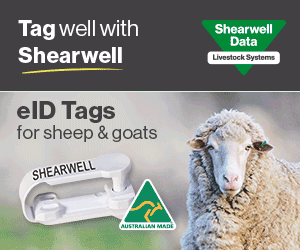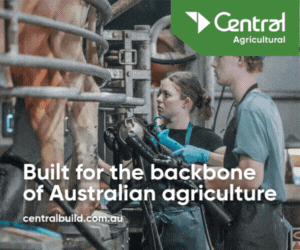1MG FlippingBooks
Digital Agriculture: A Tale of Unrealised Expectations?
Time to build on the success of bottom-up and multi-disciplinary approaches, for more industry led agricultural innovations that add value.

Digital agriculture has attracted plenty of excitement in recent years from investors – close to USD30B a year so far and increasing, pandemic notwithstanding. The vision of drones zooming over Australian rural landscapes to detect crop nutrition status or of robots tending vertical farms make a good story. And though narratives are powerful influencers for change as pointed out by Nobel Laureate Robert Shilleri, many are built on uncertain foundations.
We, too, like these ideas and have no doubt that digital technology will ultimately deliver major change to Australian agriculture. But what will this change look like to Aussie farmers, and how can they meaningfully engage? In the absence of concrete analysis, narratives can evaporate and leave people disillusioned, creating a problem for those doggedly pursuing authentic progress.
Agriculture, we know, has enormous potential for productive change through digital technology. But clarity is needed to explain how change is likely to occur, what drives and what obstructs change, given the peculiarities of agriculture and the array of factors to consider. Here we attempt to demystify the process of digitisation for Australian agriculture to establish a solid basis for expectations.
We do so by:
- Defining the potential for digital agriculture globally as food systems respond to growing demand;
- Explaining common causes of failure;
- Identifying the different pathways to success - how they work and how they can be realised in Australian agriculture; and
- Finally, we focus on what farmers can expect from these changes, and what they and their partners need to do to lever the power of digital for sustainable growth.
The global potential for digitally-driven change in agriculture
Numerous recent research endeavours and reports have highlighted this, including –
- McKinseyii, reporting Agriculture to be the least digital of all sectors in the US and Australia, and major change to be inevitable. As digitisation of business processes and supply chains will create economic growth, it cannot be ignored.
- The World Bank concluded that data are our futureiii, identifying the underutilisation of existing data by society, and calling for a re-imagining of data usage and re-usage to forge economic and social value.
- In Australia, AUD30B of change is expectediv, mainly through production gains in grains and livestock. Investment in Agri-food Tech is on a steep upward trajectory, with investment at the farm-gate end of the supply chain gaining momentum.
- The World Economic Forumv highlights digital innovation in global food systems, discussing inclusive and sustainable food systems from the perspectives of technology (e.g. artificial intelligence and blockchain), as well as human decision making.
- Lajoie-O’Malley and othersvi point to the role of digital technology for gains in food system sustainability, encouraging an ecosystem view of food systems and posits that ecosystems service researchers’ contributions to digital agriculture advancements could result in a more responsible provision of food to society.
What could possibly go wrong?
Theory and practice don’t always align. In our experience, we’ve seen three types of failures:
- User failure. Farmers or other users either aren’t interested in change, or don’t see enough value in the change to invest in it. This is the rarest type of failure.
- Technology failure is still worryingly common. Sometimes the technology is just too difficult to get to work or expensive to manage. This type of failure often occurs when technology has been simply transposed to farming from other areas.
- Process failure is the most common cause, by far. This occurs when the system around the technology (especially people and organisations) hasn’t been considered, and is what scientists at the Massachusetts Institute of Technology (MIT) call the ”Technology Fallacy”.
Pathways to success
“Everybody is trying to figure out where the value is?” bemoaned a 2017 Wall Street Journal article about the disappointing adoption of digital agriculture in the US. So, what indeed are the pathways to value and success? Let’s focus on some basics:
Value must be created - though this seems obvious, we sometimes find the technology so exciting that we forget to ask “how will it pay for itself?”;
- Value must be shared between different actors - particularly along supply chains, in a business process that is sustainable; and
- The process must be scalable.
- This last point is often overlooked yet it’s vital, because the ways in which organisations capture value from digital technology vary significantly. From a classification developed in UK manufacturing, we call these :
- The “John Deere model”- much farm machinery comes with a mass of embedded digital technology, with farmers using the technology to improve field operations;
- The “CBH model” - value is created in bulk commodities through management of scaled-up processes, with scale operators using digital technology to manage processes on behalf of farmer customers;
- The “Syngenta model” - rich sources of data are available to farmers through technology embedded in chemical or seed product; and
- The “CSBP model” - suppliers of “standard” inputs may embed digital technology in production processes for users to get more value out of these inputs.
The examples above derive from incumbents in value chains. Moreover, a range of additional opportunities are emerging to exploit opportunities for digital services. These are the so-called “disruptors” which provide digital services connecting farmers, processors, intermediaries, retailers, consumers, and many more. Many such services are new and developing rapidly, with weak and strong ties to what we have always thought of as the “farm economy”, as well as links to other industries and their commercial practices.
Above all, leadership is required to take aspirations of value creation from digital agriculture into the future. Government leadership is the most traditional and obvious source of leadership. There is evidence of this playing-out in our Federal Minister for Agriculture’s 2022 pledge of $68 million to improve traceability systems alone. Leadership is, however, being realised in new forms unique to Australia. An example is the Food Agility Co-operative Research Centre (FA CRC) which is partnering government, academia, and industry for the co-creation of establishing new data-driven technology for the agri-food industry.
How will Digital Agriculture appear amongst Australian producers?
A number of ways Digital Agriculture (DA) has been enhancing Australian Agriculture, specifically Grains, Meat and Livestock, Dairy and High Value Product, include the following:
Grains industry
The Australian Grains industry has several DA tools, such as Graincast, Digital Agriculture Services (DAS), digital trading, landscape valuation, and OFE (On-Farm Experimentation). Graincast™, Australia's first real-time grain forecast platform, was developed with CSIRO’s expertise in grain forecasting, climate, remote sensing, data management, software engineering, and social innovation. This app assists grain growers with crop decision making through making available yield data - from individual paddocks and across the whole farm.
Meat and Livestock industries
Satellite imagery pasture evaluation, electronic identification (eID), animal welfare monitoring and dual-energy x-ray absorptiometry technology (more commonly known as “DEXA”) for meat quality grading, have already become an integral part of the Meat and Livestock industry, with some common failures and successes.
High Value Product
Digitally enhanced connectivity between consumer and producer has been growing in popularity and effectiveness. In the coffee industry, CROPSTER is a great example of software which connects coffee professionals worldwide from producers all the way through to people in cafes, working with small to large businesses across the coffee supply chain to deliver solutions that add value.
In Australia, the FA CRC is co-creating projects in numerous dimensions of the agri-food industry whereby technology is enabling value creation in high-value products. Examples include disease monitoring in shellfish to reduce cost of closures; and blockchain technology in the cherry market to improve biosecurity, improve supply chain efficiency, and reduce the incidents of unnecessary product recalls.
What then is the role for “digital farmers”?
While patchy success has been enjoyed in the uptake of digital farming innovations, most of the above business models remain cases in which farmers are recipients of digital products rather than co-developers. In the past, they have been privileged with innovations being introduced to them, with supported learning. Change was seen as the role of government extension services, and for many this echo persists. We think this needs to change, particularly in countries like Australia where publicly-funded agricultural research and extension is diminishing. Signs of demand for pivoting away from government-funded agricultural science in Australia included organisations like the Grower Group Alliance in Western Australia, where innovation needs are being placed into the hands of producers, as well as the Co-operative Research Centres (CRCs) whereby research is funded through co-operation between Private Industry and Government. While such promising structures are on the rise, agriculture remains the least digitised of all sectors in the US and Australian economiesviii ix.
While no one wants to distract farmers unnecessarily from their core business, their participation is paramount. It is important that farmers engage in the development of business cases to help adopt digital technologies in ways that advance farm management and supply chain performance alike.
How can this happen? The key is to develop digital skills amongst producers and their partners through farmer-centric organisation, such as we’ve developed for on-farm experimentation. Not that farmers themselves need to become digital specialists, but rather that they engage closely with the process to ensure that management evolves through technology.
This will not succeed through top-down, externally driven processes similar to the government extension services that were widespread until the 1990s, but through the growth of endogenous, farmer-driven, digitally-enhanced business use cases that meet the requirements mentioned in (3) above and deliver value along the supply chainx. For this to occur, farmers and their consultants must imitate what other industries are doing and prepare to allocate time and money to engage with innovation ecosystems in ways that support the evolution and scaling up of successful digital business models.
The top-down/bottom-up conceptxi is drawn from marketing science whereby new product development executives have determined what consumers need and have set manufacturing and service provision in place to align with market forecasts (i.e. top-down). The bottom-up approach flips this logic on its head to suggest that consumers and their needs are what should be driving innovation. When one thinks of a pyramid whereby there are few corporate decision makers at the top and numerous consumers at the bottom; the flow of ideas and decision making about innovation development had traditionally filtered from the top of the pyramid to the bottom, whereas the bottom-up approach now seems to be gaining traction. Simanis and Duke (2014) give multiple examples of where the top-down approach has failed (e.g. the poor response of sub-Saharan Africans to insecticide-treated bed nets) as it risks alienating those who use the consumer innovations, while the bottom-up approach has made high-impact on society (e.g. an e-verification solution for tracking genuine agricultural inputs, whereby African farmers can verify the authenticity of seeds or pesticides via their mobile phones at agro-dealer shops). There is no reason why this concept cannot be translated into digital transformation in agriculture whereby farmers, as consumers of digital innovation, provide developers with their user requirements. Until that occurs, digital adoption is likely to be slow, farmer-alien and disconnected with many of the opportunities that await digital agriculture.
What’s next for digital agriculture and farmer learning?
Lack of digital connectivity is a genuine barrier to the adoption of digital innovations in regional, rural and remote communities. Yet the situation is steadily improving, in Australia at least. However, this is a barrier that can be questioned with governments.
Our traditional mechanisms for extension of scientific discovery to farmers have shifted over time, to reflect the iterative nature of innovation, the changed economics of delivery, and the availability of multiple communication channels such as CRCs and producer groups as mentioned above. Australian industry’s generally low level of engagement with universities for research and innovationxii is evident as universities struggle to engage in the new communication channels, and also with the new “breeds” of firm – big and small – selling DA to farms and the food industry more generally.
A pressing issue, and one that is directly within the control of farmers, is that of education. It has long been known that educated people (not only in the farming community) are more likely to explore and adopt innovations; this applies regardless of the source of that education (i.e. higher education, further education or local education). The profile of people new to agriculture has never been more diverse and the imperative is for this diversity to grow. We predict an expanded disciplinary base for knowledge growth and a “holy trinity” of skills:
- Biological scientists – to understand the complex biological processes involved in creating value from a farm business;
- Data scientists – to create methods of capturing and reporting meaningful data that adds value to the farm business; and
- Behavioural scientists – to understand that knowledge creation and therefore value creation from new ways of innovation requires change (sometimes uncomfortable change) to existing practices (how to deal with this change is within the domain of behavioural scientists).
The core message remains that knowledge diversity, and its communication, is needed. Furthermore, whether people new to agriculture have an education in marketing, finance, chemistry, engineering, biology or any other discipline, there must be a fundamental understanding that farming and its associated innovations are multi-disciplinary, thus input is required from a plethora of skills to ensure value is added to the farm business and its biological and social environmentsxiii.
Peak industry councils like the newly-launched Cattle Australia - national peak body for the grass-fed cattle industry to provide a unified and influential voice for producers, Wool Producers Australia, and Grain Growers, among others, are contributing a great deal to the future of their respective sectors by offering scholarships to develop leadership capabilities amongst early to mid-career people in farming. An example includes the scholarship by the Australian Institute of Company Directors, a course that teaches governance principles to new and emerging leaders. This creates national networks for young people in agriculture and provides them with the appropriate skills to lead and govern their industries into the future. However, a great deal more is needed, including contributions from outside the reach of Peak industry bodies. Acceptance of knowledge diversity is a key ingredient in improving adoption of digital agricultural innovations and transforming how farmers learn new skills to change their farm businesses.
Prof Simon Cook is leader of the recently launched Centre for Digital Agriculture at Curtin University, which develops new technologies to help shape Western Australia’s future agricultural industry.
Dr Elizabeth Jackson is a senior lecturer in Curtin University’s School of Management and Marketing, and a visiting scholar at the Royal Veterinary College (UK).
Prof Derek Baker is director of the UNE Centre for Agribusiness, and Professor of Agribusiness and Value Chains at the University of New England.
iShiller, R. J. (2017). Narrative Economics (Working Paper No. 23075). NBER.
iiManyika, J., Ramaswamy, S., Khanna, S., Sarrazin, H., Pinkus, G., Sethupathy, G., & Yaffe, A. (2015). Digital America: A Tale of the Haves and Have-Mores. McKinsey Global Institute.
iiiWorld Bank (Ed.). (2021). World Development Report 2021: Data for better lives.
ivBurwood-Taylor, L. (2021). AgFunder AgriFoodTech Investment Report 58.
vWorld Economic Forum. (2021, September). Food Systems: Data, Digital and Innovation Levers.
viLajoie-O’Malley, A., Bronson, K., Van der Burg, S., & Klerkx, L. (2020). The future(s) of digital agriculture and sustainable food systems: An analysis of high-level policy documents. Ecosystem Services, 45, 101183.
viiPavitt, K. (1984). Sectoral patterns of technical change: Towards a taxonomy and a theory. Research Policy, 13(6), 343–373.
viiiTrendov, N.K., Varas, S., & Zeng, M. (2019b). Digital technologies in agriculture and rural areas—Status report, FAO, Rome. Licence: cc by-nc-sa 3.0 igo.
ixBlackburn, S., Freeland, M., & Gärtner, D. (2017). Digital Australia: Seizing opportunities from the Fourth Industrial Revolution, Digital/McKinsey.
xLacoste, M., Cook, S., McNee, M., Gale, D., Ingram, J., Bellon-Maurel, V., ... & Hall, A. (2022). On-Farm Experimentation to transform global agriculture. Nature Food, 3(1), 11-18.
xiSimanis, E. & Duke, D. (2014). Profits at the Bottom of the Pyramid, Harvard Business Review.
xiiWilkinson (2015). Australia's dismal, bottom-of-pack performance in university-business innovation, Financial Review.
xiiiRobertson, M.J., Hall, A., Walker, D., Keating, B.A., Bonnett, G. 2016. “Five Ways to Improve the Agricultural Innovation System in Australia.” Farm Policy Journal 13 (1).



















